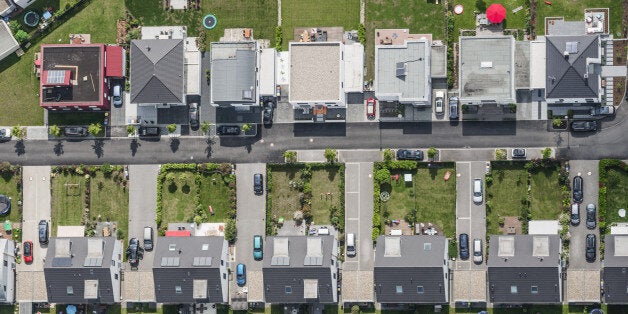

To quote a well-known Australian soap opera theme tune: "everybody needs good neighbours". But how much do we really, in contemporary living, engage with the objects and people with whom we share our streets?
The 'decline' in communities and community values has been reported widely over the last few years, with one study even estimating that 70% of us don't know the name of the person who lives next door.
If these trends are true, they paint a picture of individual households living more insular and increasingly disconnected lives. However, according to a new study from electric car campaign, Go Ultra Low, changes may occur in future neighbourhoods that bring everybody's worlds closer together.
These developments - as with most modifications to UK society - will be fuelled by capabilities of new technology. 'Smart' has become a word that defines anything that connects its owner or user to the internet: already, we have smart phones, smart watches, smart TVs and a plethora of other smart devices. In our homes, central heating systems are now increasingly managed through smart meters that can be controlled remotely through mobile apps.
Go Ultra Low's poll of 2,000 British people shows that smart technology which improves the wellbeing of everyone in the neighbourhood will be very popular in the future. When asked about new features which would improve community living, the respondents went for smart lampposts as their top pick. However, the dream isn't just lampposts which collect and utilise data from the world around them - these are already in existence - what people would actually like to see is lampposts that emit colourful hues to help combat seasonal affective disorder (SAD).
This particular breakthrough may be a way off, but the sentiment it captures is consistent with other findings from the research. Home buyers of the future will seek out communal neighbourhood features that make lives easier and the world greener.
From robotic gardeners to fox-proof bins, the top ten includes some weird and wonderful potential creations. Yet despite this, some people's suggestions are already becoming a reality. For example, many respondents cited solar panels, rainwater harvesting technology, electric car charge points and electric car sharing schemes as sought-after elements.
These are becoming increasingly commonplace. At The Beacon Development in Hemel Hempstead - billed as the world's most sustainable residential tower - sustainability is a crucial factor in the design and architecture of the dwellings. Almost all the electricity at the development is provided by a zero-emission vertical solar 'farm' and rainwater will be re-used to flush toilets.
More than that, though, residents in the building will be brought closer together through a car collective. Five electric vehicles, and communal charge points, will be provided so that everyone can get to enjoy the benefits of emission-free motoring.
And that's a development that's not just good for the environment and the motorists of the future, it's one that may improve community cohesion. Many of Go Ultra Low's respondents thought that sharing more would lead to caring more about the people next door - evidence, perhaps, that technology holds the key to happy neighbourhoods of the future.
HuffPost UK Tech is running a two-week focus on our Tech For Good campaign, which aims to highlight the technology that is driving social change and making a positive, long-lasting difference to our world. If you'd like to blog on our platform around this topic, email ukblogteam@huffingtonpost.com with a summary of who you are and what you'd like to blog about.